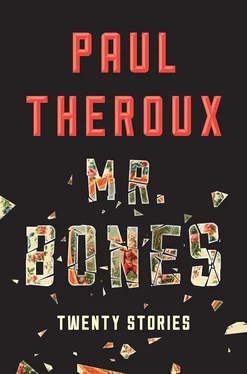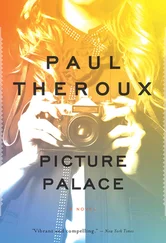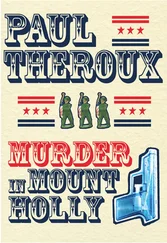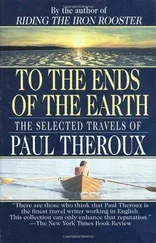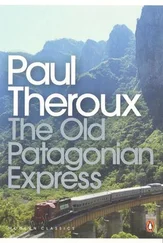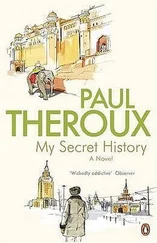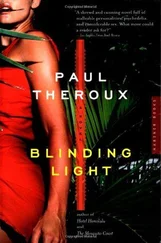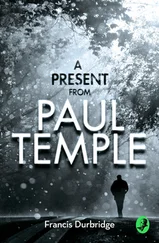Some people, not many, received financial help from her. They were always wounded, a bit lost, abjectly grateful. Just as she could be cruel to some people who were vulnerable, she could take others under her wing and protect them. That was part of her paradox, that — so hardhearted — she knew how to offer help. She fed stray animals; she gave money to a ranch in Idaho that cared for horses rescued from circuses.
There was a woman who cleaned for her, to whom she’d given a car (not a new car, but serviceable) and paid someone to sort out her taxes; an old feeble gay handyman whose partner had died and who was indigent; an alcoholic chef who was just out of rehab and was trying to put his life back together (“I can start him off with a little restaurant”). They were all lost souls, they were no threat to her, and in truth she could not have been kinder to them; though each of these people served a purpose — the cleaner, the handyman, the chef.
She had no children, so I suppose all her maternal feelings were directed toward abused animals and these sad people who, in their tentative dependent lives, were like children, who also performed chores for her with some ability.
She was entirely self-invented. This is not a simple trick of the ego; it takes work, persuasion, money, boldness, willpower, and imagination. You have to admire it. And so, because of my portraits, my giving these images life, I began to find her of much greater interest, hideously compelling at times, for the way she had made herself, the life and the pretenses she had created, all her fictions.
Just as she could whip around and turn cruel or unfeeling, with “She is hideous” or “Lipstick lesbian,” or might laugh like a witch at someone’s bad luck, she could be unexpectedly concerned, sympathetic, even deeply moved at the plight of an unfortunate person, such as one small girl, Selma, the stepdaughter of a Brazilian roofer. The child disappeared from the island. It was not known whether she was with the man’s estranged wife. The roofer was evasive and then he too disappeared.
“I’m worried sick,” Mrs. Everest said. And she looked sick — gaunt, hollow-eyed, desperate.
“She might turn up,” I said. I could only offer platitudes.
“You don’t know,” she said to me. “That man has done something with her. I know he’s abused her, and I don’t mean ‘touched inappropriately’—I hate that expression. What does he care? She’s not his natural daughter.”
As I write this, about her kindness, I realize that I tend to revert to her cruelty, that I find it hard to believe that she had a soft spot. That cynicism is the influence of the woman herself on me, that I have difficulty bringing myself to believe in her kindness because she had taught me to be cynical. She made it impossible for me to believe in her.
She was a collector, an accumulator, a significant trait of the very wealthy, hoarding as investing — property, paintings, even people if they were powerful enough, stacking them up, displaying them as trophies — from the group photograph (“class picture,” she called it) that was always taken of the guests at her annual summer party, to the objects on the shelves in her office. “That’s scrimshaw, they’re all whales’ teeth,” she’d say, reminding me that there is no pedant like an ignoramus.
Any person’s collection of chosen objects is a glimpse into her mind. I liked Mrs. Everest better when I saw some folk art she’d collected, because folk art is innocent-looking and highly colored, purposeful, inventive, always seeming to evoke what is happiest in childhood. It was also the opposite of the hideola that she exhibited.
Another lunch at Junior’s, a fondue this time. As always, she led the conversation. She was excited about the art scene, she said; she wanted to go in a completely new direction. It occurred to me that she was going to ask me to show my work at her gallery. But no, she began to speak about a man who worked in sand.
Thinking I had misheard, asking her to repeat this ( sand? ), she detected the incredulity in my tone and took it for hauteur. She said, “No one has ever done what he’s doing.”
She chewed, she spat, she made garbage of the fondue, and at the end she patted her food-splashed mouth and said, “I have a feeling. When I have a feeling about something, I’m invariably right.”
“Tell me,” I said.
“I have a feeling that you’re going to do my portrait.”
This teasing statement was typical of Mrs. Everest. She wasn’t commissioning a portrait; she wasn’t asking a favor of me. She was mentioning a rapture she’d had, that I was going to paint her picture.
She turned to look out the front window of the restaurant. But she was listening, tremulous with attention.
“Wouldn’t it be marvelous if your portrait showed me holding a bouquet of flowers?” She was persistent. “Each flower with its traditional meaning — daisies for innocence, pansies for loving thoughts, tiger lilies, and so forth. A whole message in blossoms.”
I did not say that one could not improve on a Henry William Pickersgill masterpiece. I did not say no. No one said no to her. But she did not hear yes, and my silence meant I wasn’t interested. My pride would not allow me to do a portrait of someone who thought so little of my work that she refused to show it in her gallery. Or perhaps I was rebelling against her taste for installations and looks-like-art.
Long before she suggested that I do her portrait, I made a short and bitter ink sketch of her, rather dark, a mushroom on a dunghill, but close-up it was a little twisted woman on a money box, rendered perfectly. Her hatred of figurative painting was an inspiration to me, the sort of contempt that turned my every brushstroke into a calculated phrase. And it made me resist her.
A passerby glancing through the restaurant window at the three of us — Izzy was also there — would have assumed we were old friends having an intimate meal together, never guessing that this was a ritual of farewell. The passerby would not have noticed that Mrs. Everest had asked me nothing about my painting, nothing about our plans, our travel, our health. That she did not meet my gaze or even look my way.
After her monologue about the new show she didn’t mention meeting again — nothing about the future, not even next week, never mind next month. She didn’t eat a mouthful of the salad she had ordered. She poked the crab cakes apart, scattered the lettuce, punctured and pushed the cherry tomatoes, mashed the avocado. She ordered a glass of Prosecco, but without taking a sip, her eyes brimmed with gluey reproachful tears.
In the most low-key way, just chatting, making small talk, she conveyed indifference with the slightly perturbed and preoccupied air of someone who couldn’t linger, with an unmistakable suggestion that, though she might see us again, we no longer mattered to her.
This invitation had been Mrs. Everest’s idea. She wanted a portrait from me. She had even described it: Mrs. Everest posed in a sun-drenched window among symbolic flowers. All that remained was for it to be hung. And listening, just smiling, I had sent a message of disapproval, which was like a foul smell.
When the check for the meal came, the immensely wealthy Mrs. Everest frowned and turned away from it.
“I must run,” she said. “Don’t get up. Leonard is outside.”
Leonard, her driver, greeted her with a groveling smile and a little bow, and then he helped this old lady into the car.
And when they drove away, Izzy said, “She seemed in a funny mood.”
I saw Mrs. Everest one more time. This was at Sandy’s house on the bay. He had invited us, but said nothing about Mrs. Everest’s proposal that I should paint her portrait.
Читать дальше
